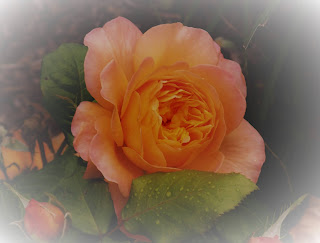Invertebrate Summer
Owing to the imminence of a forthcoming poetry publication on the theme, invertebrates have been on my mind.
On a canalside walk with friends, we noted that this year there seemed to have been more insects than ever around these parts. Perhaps it’s a combination of thriving trees and plants planted in recent years, and the recent hot weather – which increases insect mating - but I have noticed a boon of little creatures on the leaves and branches flanking the canal, weaving in and out of riverside flowers, and turning up unexpectedly on roadsides, in fields and woods.
Naturally, there is no shortage of seasonal regulars – wasps seem to outnumber bees, though the hollyhocks on my road are a favourite haunt of honeybees, which gorge on pollen and emerge smothered in white, like dusted jellybabies. Roadisde roses and thistles by the Calder throng with bees, wasps and ants. White and peacock butterflies bob about the flowers at Copley reserve, where I watched a cinnamon moth caterpillar, a twisting cylinder of orange and black, curl its self around a stalk of ragwort, a plant proving popular this summer with "ringlet" butterflies, which feast on grass and bramble.
Treks deeper into undergrowth reveal diverse creatures such as longhorn beetles, which feed on plant tissue and whose wiry antennae are often longer than the rest of their bodies, sap-sucking shield bugs, whose grazed green or earthy brown backs go see-sawing through leaf litter, velvet mites, minute arachnids whose make frenzied journeys up and down decaying bark like squiggles of wriggling ruby, even the mechanical looking potato capsid (Closterotomus norvegicus), which I've spotted breezing through teazle, and inspecting riverside grasses, and whose dietary tastes also include, where available, cannabis - so if you should ever see a dazed looking bug languidly lazing among the leaves or bent double with manic laughter, you will know why!
The invertebrate summer has spread indoors as well as out. The Brown house moth (Hofmannophila pseudospretella) is a greyey flake of blackish brown, with fawny wings, which I've seen on occasion along with the ladybirds, whose presence will increase with the approach of autumn, as they search for places to hibernate. Out on my balcony on sweltering, humid nights, I've seen swathes of leopard slugs stretching their rubbery blubber across the starlit stone, khaki-ey collages of black-spotted yellow. Slugs and snails are everywhere this summer. Muddy woodland hills, streets and gardens shimmer with slippery slitherers - from the bloated burgundy of Arion rufus (red slug), to the fat black bulge of Arion ater (black slug), the glassy wet yellows of the lemon slugs, to the small, slimy jiggle of the Budapest slug, lurking under stones. On rainy nights, the stone walls gleam with the shells of brown or white lipped banded snails - pearly domes etched in rich black swirls, like childhood sweets. Bobbling flowerbeds, the wobbly shells of garden snails tower over the silvery grey tongues of their bodies, while, in the dusky shadows of overgrowth and rubble, tiny glass snails gleam like overlooked jewels.
From a distance, some millipedes might be mistaken for slugs. In recent weeks, I've watched them wiggle along walls, and stipple beech leaves in ripply black. The nearby alder leaves have played host to the aptly-named alder leaf beetles, glossy blobs of shiny black of which I saw little in previous years, but which, this year, have dotted leaves and grasses in increasing numbers. Other beetles I've noticed have been the leggy violet ground beetle, that flexible predator the devil's coach horse - a powdery black beetle which could be mistaken for the offspring of an earwig and a scorpion - and myriad weevils: the scurrying Otiorynchus genus, the black vine weevil, whose furtive twitchiness and long, loping nose always make it look like some clumsy villain, more Peter Sellers than Peter Cushing, and the unique Polydrusus formosus, brilliant bluey-green and no longer than about six millimetres. As mentioned, ladybirds are profuse this year, and therefore so have been their small, crinkly larvae - scuttling specks of black and orange, and looking, like most larvae, only slightly like the creature into which it will evolve.
My collection of invertebrate-inspired poems is due for publication in the near future, and might be seen as a sort of sequel to my debut publication Little Creatures, which appeared eight years ago. The idea for that pamphlet was actualy inspired by watching damelflies skimming a lake at Roundhay Park, Leeds, and these gem-like, willowy creatures also feature in my new book. They are one kind of insect that had seemed a little thin on the ground - or air - this summer, until, that is, another walk along the canal, this time one of my favourite stretches, outside Brighouse. I noticed a flash of blue, shimmying through meadowsweet flowering by the water like puffs of candyfloss. Only for a moment did the thin, cerulean stripe remain visible, before descending into clouds of flowers. But the next time I looked, it was there again - a sleek, stiff stick of sapphire, propelled by four transparent wings, bouncing on the breeze. Before I knew it, there were two, three, perhaps a dozen or more damselflies, weaving through the greenery and hovering above the water like tentative ballerinas, a glimmering mirage of lucent blue jewels.









Comments
Post a Comment